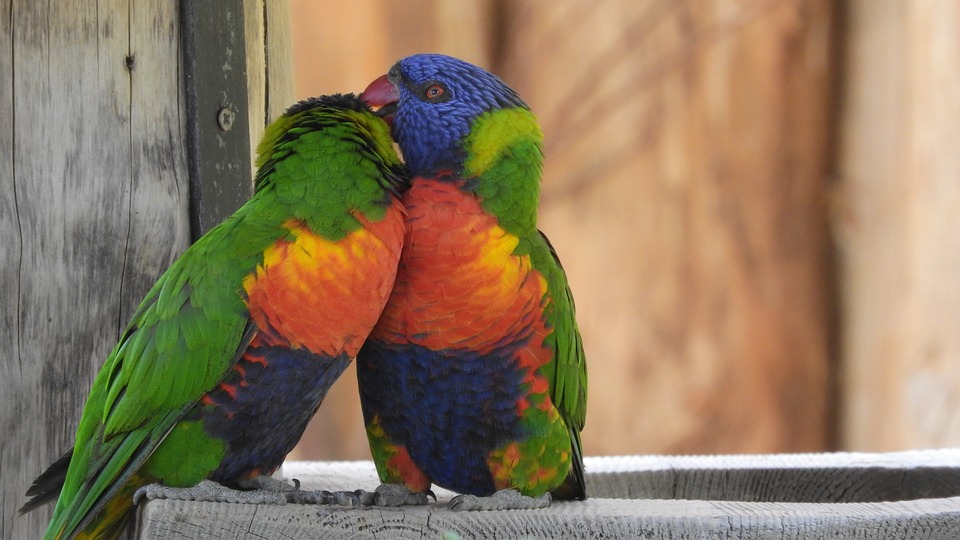Parrots are known for their incredible ability to mimic sounds and actions. Teaching your parrot to imitate actions or mimic body movements can be a fun and rewarding experience for both you and your feathered friend. In this article, we will explore effective training techniques and tips to help you successfully teach your parrot this impressive skill.
Training your parrot to imitate actions or mimic body movements goes beyond just entertainment. It is an essential part of their cognitive and physical development. By engaging in training exercises, you provide mental stimulation, encourage physical activity, and foster a stronger bond with your parrot.
Before diving into training exercises, it’s crucial to create an optimal environment for your parrot’s learning experience. Building a strong bond and trust with your parrot is fundamental to successful training. Spend quality time with your parrot, establish a positive relationship, and ensure they feel safe and secure in their environment.
Training requires consistency and patience. Dedicate regular sessions to training your parrot, keeping them short and focused. It’s essential to be patient and understanding, as every parrot learns at their own pace.
Positive reinforcement is key to motivate your parrot during training. Use treats, praise, or their favorite toys as rewards to reinforce desired behaviors. Make sure the rewards are immediate to connect them directly with the action or movement you want to teach.
Choose a quiet and distraction-free area for training sessions. Minimize noise, interruptions, and potential distractions to help your parrot stay focused.
Now that you’ve set the stage for success, let’s explore effective training techniques to teach your parrot to imitate actions or mimic body movements:
Start by teaching your parrot basic commands, such as “wave,” “nod,” or “turn around.” Use consistent verbal cues paired with hand gestures. Gradually introduce treats or rewards as positive reinforcement when your parrot successfully imitates the action.
Parrots are highly visual learners, and mirror training can be an effective technique. Use a handheld mirror to reflect movements or actions you want your parrot to imitate. Encourage your parrot to observe and try to mimic what they see in the mirror. Over time, they will learn to associate the actions with the verbal cues you provide.
Shaping is a training technique that involves breaking down complex behaviors into smaller, achievable steps. Start by rewarding your parrot for any slight movement or action that resembles the desired behavior. Gradually increase the criteria for receiving a reward, shaping their behavior until they fully imitate the action or movement.
Parrots are social creatures, and they often learn by observing others. Take advantage of this natural behavior by involving other trained parrots or yourself in the training process. Your parrot will observe and mimic the actions or movements they see, accelerating their learning progress.
Here are some frequently asked questions about teaching parrots to imitate actions or mimic body movements:
Q: How long does it take to teach a parrot to imitate actions or mimic body movements?
A: The duration of training can vary depending on the individual parrot and the complexity of the actions or movements. Some parrots may pick it up within a few weeks, while others may require several months of consistent training.
Q: Are all parrot species capable of imitating actions or mimicking body movements?
A: While most parrot species have the ability to imitate actions or mimic body movements, the extent of their mimicry skills may vary. Some species, such as African Greys and Amazons, are known for their exceptional mimicry abilities.
Q: Can older parrots learn to imitate actions or mimic body movements?
A: Yes, older parrots can still learn new behaviors through training. However, it may take more time and patience compared to training younger parrots.
Q: Are there any risks associated with training parrots to imitate actions or mimic body movements?
A: As long as the training is conducted in a safe and positive manner, there are minimal risks involved. However, always monitor your parrot during training sessions to ensure they aren’t exerting themselves or engaging in any potentially harmful behaviors.
Teaching your parrot to imitate actions or mimic body movements can be an exciting journey. Remember to approach training with patience, consistency, and positive reinforcement. Enjoy the process and celebrate each milestone achieved with your intelligent and talented parrot companion!









